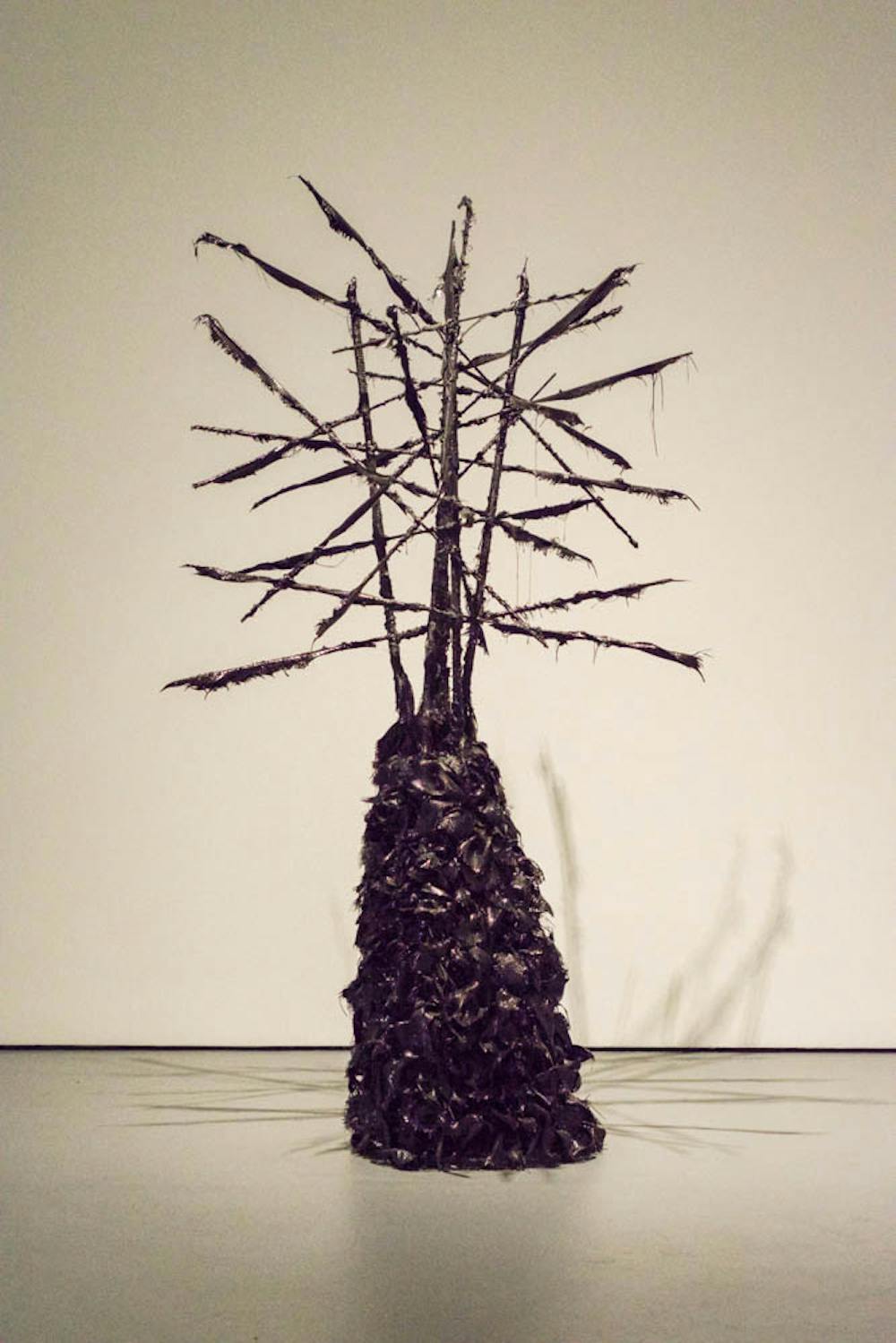Last Friday, students and faculty from the University and the Rhode Island School of Design gathered in the List Art Center’s David Winton Bell Gallery for the opening reception of Richard Fishman’s exhibition, “What Remains.” Fishman, who has crafted inventively disruptive pieces since the ’60s, is renowned for his interdisciplinary works that juxtapose natural and synthetic materials to create striking sculpture installations.
A recipient of both the Guggenheim and Howard fellowships, Fishman has been a member of Brown’s Department of Visual Art since 1965. He has also designed creativity workshops and served as the Director of the Creative Arts Council for the University.
Fishman “has been a crucial part of the art (community) here at Brown for decades,” said Ian Russell, director of the Bell Gallery. “We’re hoping that the community will find it inspirational or enlightening to see types of artistic work that a leader such as himself can make.”
For two hours, gallery-goers slowly meandered through the exhibition’s three rooms, all of which featured works that merited praise as stand-alones but collectively proved more meaningful. The walls showcased several “Untitled” pieces where carbon fragments were made to resemble wispy, wind-torn locks of black hair scattered about a creme canvas. “What Remains,” the gigantic, steely centerpiece and principle sculpture from which the exhibition derived its name, stands at least seven feet tall and is primarily constructed of carbon fiber fabric. In another room, two tree-like sculptures stood side by side. One was made of elm wood and the other of carbon composite, a synthetic material most commonly used in military aircraft that first appeared in Fishman’s work in 2009.
Russell noted that Fishman’s current work with carbon composite makes viewers consider their relationship to the organic and the synthetic: “the contrast of wind-battered sails and sleek, techno-futuristic (materials) communicates a sense of meditative urgency,” Russell said, adding that he suspected there was a social commentary element to Fishman’s work. “It’s hard not to think of ‘Black Mirror’.”
Alternatively, Modern Culture and Media professor and filmmaker Michael Udris was moved by the “rawness” of Fishman’s work, “particularly with these large slabs,” he said, pointing to the twin tree sculptures. “It’s bewildering to look at.”
Artist Brien Weiz, said that Fishman enjoys referring to the installation as a “cast of characters.” Russell was also impressed by the variations in color: “It’s moving to see such a spectrum of color within blacks. … It shows that there’s a tremendous range of possibilities and feelings in our difficult emotions. That difficult, fraught place can be profound.”
About Fishman’s work, Weiz said, “I feel like (Fishman) is never not experimenting. ... He’s always exploring something new. There’s a lot of depth to the process.”





